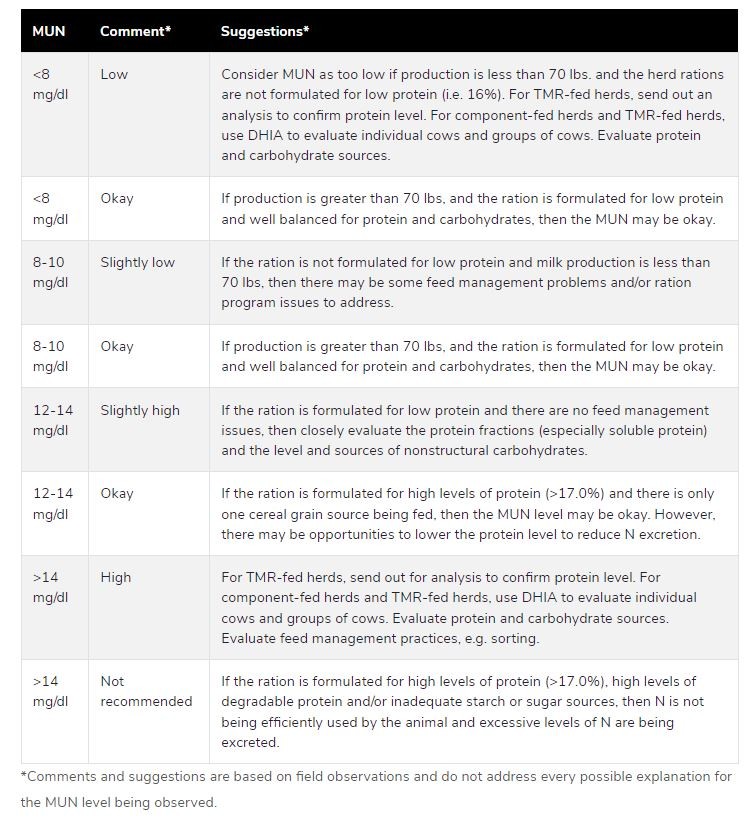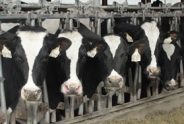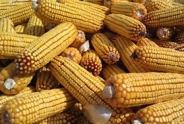Interpretation of Milk Urea Nitrogen (MUN) Values - PSU Extension
Interpretation of Milk Urea Nitrogen (MUN) Values - PSU Extension (original article can be found here)
MUN is a breakdown product of protein and it can be used to monitor protein status of cows.
Milk Urea Nitrogen (MUN)
Urea is produced in the liver from ammonia derived mainly from the breakdown of protein in the rumen and from normal daily metabolism of absorbed amino acids and body protein. If bacteria in the rumen cannot capture the ammonia and convert it to microbial protein, the excess ammonia is absorbed across the rumen wall.
Excess ammonia circulating in blood can be toxic and the conversion of blood ammonia to urea is the way to prevent this toxicity. The body excretes blood urea in urine and milk. Urea nitrogen (N) levels in blood plasma, blood serum and milk of an individual cow are highly related. Therefore, MUN values are representative of urea levels of blood and other body fluids. Because MUN is a breakdown product of protein, it can be used to monitor protein status of cows. In addition, MUN values can be used to improve the efficiency of microbial protein synthesis, which may reduce N excretion into the environment.
Normal ranges for MUN
There are various ranges reported for MUN, which can make interpretation challenging, Table 1. Some researchers recommend a range of 10 to 14 milligrams per deciliter (mg/dl) while others recommend at range of 8 to 12 mg/dl. The later range reflects rations that are formulated to the cow's requirement for protein and excel in the balance of protein, protein fractions, and carbohydrates to capture excess ruminal ammonia. These values typically are associated with a ration protein level of approximately 16%.
Researchers from the University of Wisconsin estimate that there is 2 mg/dl change for each one percentage unit change in protein when rations contain 15 to 18.5% protein. Herds with an MUN above 12-14 mg/dl would have increased urinary N excretion and there would be opportunities for improvements.
There are many factors affecting MUN values. The feeding system, i.e. total mixed rations (TMR) versus component-fed herds, and cow eating patterns can affect MUNs. The time of feeding relative to milking time; MUN values usually peak 3-5 hours after feeding. In addition, herds milked 3x tend to have higher MUN values than herds milked 2x. The AM MUN value is usually lower than PM samples taken from the same herd. When comparing MUN values in a herd between months, account for differences in sampling times.
Another factor affecting MUN values is breed. Holsteins usually have a lower MUN value than other dairy breeds, e.g. Jerseys. However, this may be due to body weight rather than a breed difference. Also, MUN values tend to be higher in the summer months.
One strategy for a meaningful interpretation of MUNs on a particular dairy operation is to evaluate the current ration along with either DHIA's MUNs and/or bulk tank values. It is helpful to have several MUN values to compare on a particular diet as a baseline. This will help determine possible problems in the ration or feed management practices. Two possible problem areas would be MUNs that are high (>12- 14 mg/dl) and that are very inconsistent.
When the herd MUN changes by more than 2 to 3 points (normal variation), investigate ration or forage changes and feed management problems (e.g. sorting). As milk plants include MUNs in their testing programs, there is an opportunity to examine weekly averages as large variations occur day to day. Also, DHIA and milk plant MUN values can vary due to differences in machine standards and sampling. The advantage of DHIA MUNs is that individual cow and group problems can be identified whereas bulk tank MUNs can evaluate the whole herd on a more frequent basis.
When it is determined that MUN levels are outside normal ranges, investigate the ration, milk components, feeding management and nutrient balance. Low MUNs (<8-10 mg/dl) indicate a possible dietary protein deficiency, which can result when the rumen bacteria yield is reduced, thereby limiting milk production and milk protein yield. High MUN levels (>12-14 mg/dl) can be associated with excess dietary protein or an imbalance of ruminal protein, protein fractions and energy (non-structural carbohydrates). These factors can also be related to reduced milk yield, true protein, and feed efficiency. High MUN values indicate wasted feed protein and more energy being used by the cow to excrete that extra protein. It also means that excess nitrogen is being excreted into the environment.
Reasons for MUN levels falling outside recommended ranges
Milk and blood urea N have been related to efficiency of N use. As excessive protein or rumen degradable protein is consumed, MUN may increase. A positive relationship has been found between MUN and urinary N excretion so that monitoring MUN can help reduce excessive N excretion. The key factor is providing adequate rumen available carbohydrates to provide the energy for the rumen microbes to convert ammonia into microbial protein.
Some feed and management changes that may lead to higher MUN values:
- Feeding new crop corn silage that may not have the same level of fermentable carbohydrate (less starch or starch is less available) compared to corn silage that has fermented for a period of time.
- Cows grazing lush pasture can increase their intake of total and degradable protein
- Change to a different hay-crop silage that is wetter or higher in protein and/or soluble protein.
- Feeding corn grain that has a coarse particle size. This may reduce the rate of fermentation in the rumen and may not match with the protein fractions being fed.
- Shifting from processed corn silage to unprocessed or improperly processed corn silage. This could affect the amount of available fermentable starch.
Incorporating more degradable protein sources (e.g. changing from heat-treated soybeans (whole or cracked) to raw soybeans or heat-treated beans that are ground), which results in more rumen ammonia.
If the rumen does not maintain a minimum level of ammonia, milk yield and milk protein yield may drop because of reduced microbial protein synthesis. If MUNs are low (<8-10 mg/dl), evaluate the protein level, protein sources and protein fractions being fed. A nutritionist should be consulted when MUNs are outside the normal range. Discuss with your nutritionist better ways to balance both protein and carbohydrate fractions in the diet to improve rumen fermentation and nutrient balance.

Upcoming Events
WNY Pastureland Conversion & Soil Health Field Day
July 16, 2025
Middleport, NY
Join American Farmland Trust for the Western New York Soil Health Field Day on July 16, 2025, at Zeliff Farm in Middleport, NY, from 9:00 AM-3:15 PM. Learn about pasture conversion, soil health benchmarking, biochar in grazing systems, and best grazing practices. Plus, enjoy hands-on demos with the NY Soil Health Trailer, drones, and cover crops! Check out the attached agenda for more information about the field day and REGISTER HERE. Zeliff Farms is a regenerative beef operation who has recently partnered with AFT on outreach and education to farmers including learning circles and evaluating biochar effects on soil health.
IPM Strategies to Protect Corn and Soybean Seed in NY
July 30, 2025
Hamburg , NY
SWNYDLFC and Cornell IPM are hosting a grower meeting to discuss integrated pest management strategies for protecting corn and soybean seed in New York.
FAMACHA Training for Sheep and Goat producers in Woodhull NY
August 13, 2025 : FAMACHA Training in Woodhull
Woodhull, NY
Join us for a discussion and hands-on training for internal parasite integrated pest management in sheep and goats. Certification is available to all students participating in the workshop.
Announcements
No announcements at this time.





